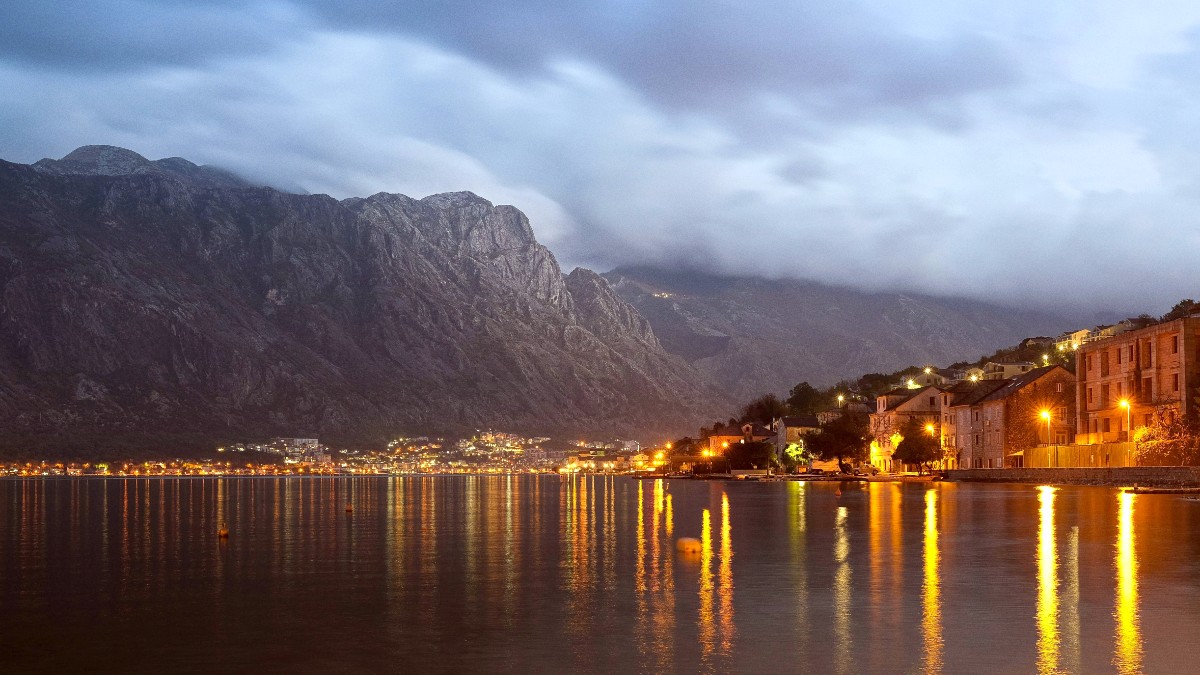
Montenegro
Spring (April-May) temperatures typically 15-22°C (59-72°F). Rainfall moderate, and the landscape lush and green, a beautiful time for sightseeing and outdoor activities.
Summer (June-August) hot and sunny weather, with temperatures often 25-35°C (77-95°F). Precipitation low, but humidity high, ideal for swimming and beach activities. Autumn (September-October) temperatures mild, 18-25°C (64-77°F). Humidity decreases, and weather pleasant for sightseeing, though rainfall increases toward late autumn. Winter (November-March) weather cool, temperatures between 5-15°C (41-59°F). Higher precipitation common, and occasional strong winds, known as Bora, possible. Snow rare at sea level but common in surrounding mountains, creating a dramatic backdrop.
Pack layers for spring or autumn visits. Mornings and evenings cool, even with warm daytime.
Summer heat intense; hydration and shade during midday hours important. Winter often strong Bora winds, specifically in exposed areas, can affect ferry services and make outdoor activities less comfortable. Rainfall highest in late autumn and winter, so pack waterproof gear for these months.
Warmest weather, peak crowds, highest prices.
Warmest weather, perfect for swimming and beach activities. Numerous festivals and events during these months.
Significant crowds, especially in Kotor Old Town and popular beaches. Accommodation and flight prices reach their peak. Finding parking difficult; peak temperatures very hot, plan carefully to avoid midday sun.
Pleasant weather, fewer crowds, lower prices.
Temperatures pleasant for sightseeing, hiking, and exploration. Fewer crowds compared to peak summer months for a more relaxed experience. Prices generally lower for accommodation and flights. All attractions typically open, and water warm enough for swimming in late May, early June, and September.
Early spring or late autumn might bring some rain, and the sea can be cooler in May and October compared to mid-summer.
Fewer tourists, lowest prices, cooler weather.
Significantly fewer tourists for a peaceful and authentic local experience. Accommodation prices at their lowest. Cooler weather suitable for hiking; dramatic scenery, often with mist or snow-capped peaks, unique photo opportunities.
Many tourist-oriented businesses, including some restaurants and tour operators, may close. Ferry services might operate on a limited schedule. Temperatures cooler, and chance of rain or strong winds increased. Sea too cold for swimming.
Swimming and Beach Activities: June, July, August, early September for warmest water and most sunshine.
Hiking and Outdoor Activities: April, May, June, September, and October for pleasant temperatures without excessive heat.
May, June, September, and October for comfortable temperatures and fewer crowds.
June, July, and August for calm waters and sunny skies.
Stay hydrated and seek shade during midday hours in summer.
Bora winds in exposed areas can affect ferry services and comfort.
Highest in late autumn and winter; pack waterproof gear.
Requirements vary by nationality, always check official sources before travel.
For visa applications, check the official Ministry of Foreign Affairs of Montenegro website for specific and up-to-date information. Plan this process well in advance.
Ensure all documents are current and accessible. Print copies or have them accessible on your phone.
Montenegro uses the Euro (€) as its currency. Montenegro unilaterally adopted the Euro without being a member of the Eurozone. If travel from an Eurozone country, no currency exchange necessary. Otherwise, exchange foreign currency to Euro before arrival or use ATMs. ATMs widely available in towns and cities. Your bank may charge fees for international withdrawals, check beforehand. Credit cards widely accepted in hotels, larger restaurants, and supermarkets. Smaller shops, local markets, and some cafes may operate on a cash-only basis. Always carry some cash, especially smaller denominations, for convenience.
A detailed cost breakdown for different travel styles:
Prices for specific items:
AirHelp passengers up to €600 in compensation for delayed or canceled flights.
Your well-being a top priority during travel.
No specific vaccinations for entry to Montenegro. Always consult a medical professional for personalized advice.
For medical and travel-related coverage for foreigners visiting the United States, consider Insubuy (1.5-150 fixed commission, 30 days cookie).
During hot summer months, sun intensity high. High-SPF Sunscreen, Wide-brimmed hats, shade during peak sun hours (11 AM to 3 PM), and plenty of water for hydration.
Carry a Reusable water bottle for frequent refills.
Avoid prolonged midday sun exposure.
Changes in diet or water sometimes lead to mild stomach upset. For hiking in rural or forested areas, Insect repellent and regular tick checks after outdoor activities.
Good food hygiene: wash hands frequently, consume thoroughly cooked food from reputable establishments.
Avoid undercooked or long-sitting food. For mosquitoes, Insect repellent with DEET or picaridin for bites.
Main hospital facilities in Podgorica (Clinical Center of Montenegro) and larger cities like Kotor (General Hospital Kotor, Opšta Bolnica Kotor). For serious medical emergencies, Podgorica has more comprehensive services. Public healthcare standards may differ from Western Europe or North America.
Pharmacies (Apoteka) widely available, often with English-speaking staff.
Serious conditions may need emergency evacuation. Dial 112 for general emergencies.
| Category | Details | Tips |
|---|---|---|
| Drinking Water | Tap water in most towns, including Kotor, generally safe to drink. Bottled water widely available, preferred by some travelers. | Bottled water for preference; otherwise tap water fine. |
| Crime & Safety | Montenegro has a low crime rate, a safe destination for tourists. Kotor Old Town generally very safe, but awareness of belongings, especially in crowded areas, due to pickpocketing possibility in peak season. | Standard precautions apply. Avoid walking alone in poorly lit or isolated areas at night. Do not leave valuables unattended in public spaces or visible in your vehicle. |
| Natural Disasters | Earthquakes: seismically active zone, but major earthquakes rare. Wildfires: risk during hot, dry summers, specifically in forested areas. Flooding: localized flooding possible from heavy rainfall in autumn and winter. | Pay attention to local warnings for wildfires. Buildings in historical areas constructed to withstand tremors. |